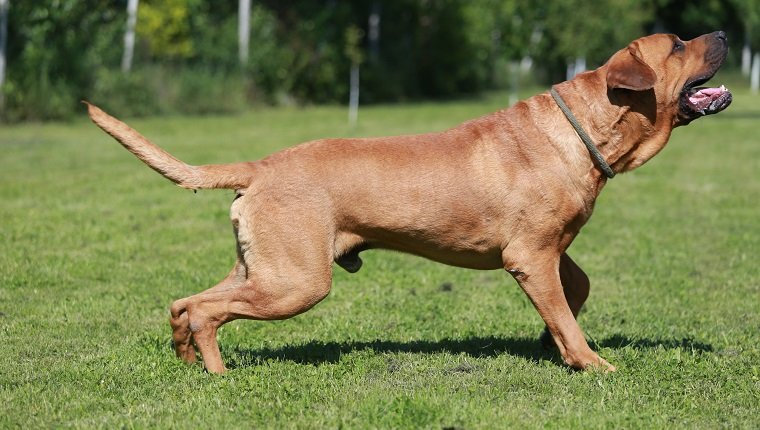
It’s okay if you’re only now learning about the Tosa Inu dog breed; you’re in good company. Though it’s a Japanese dog breed with a long history, it’s very hard to find in the United States. Nevertheless, this is a remarkable dog, held in the highest esteem by its numerous admirers.
Would you want to find out more about the Tosa Inu dog and see whether this strong and faithful breed is a good fit for your family and lifestyle? If so, stay reading; that’s what this article is all about.
Tosa Inu Overview
The Tosa Inu has its roots in a tradition of dog fighting in Japan that dates back to at least the 1400s. Tosa Inu dogs, a possible hybrid of many huge breeds, were developed for use in combat sports.
These pups are the only ones allowed to participate in dog fighting in Japan legally, despite efforts by animal rights activists to ban the practice.
This being said, the Tosa Inu is also a highly valued dog in Japan, frequently held in the same esteem as human sumo wrestlers. Tosa Inu dogs are popular not just as fighting animals, but also as security dogs and loving household pets. They’re great for experienced dog owners who want a trainable and hardworking canine because of their loyalty, attentiveness, and gentle manners.
The consequences of using Tosa Inus incorrectly, however, may be disastrous. They might develop behavioral problems like stubbornness and violence if they are not trained, socialized, exercised, and given attention every day.
You should know that the amazing Tosa Inu puppy you’ve had your eye on could not be allowed in your location if that’s a dealbreaker. Several governments have outright banned this species. To top it all off, the Tosa Inu is very uncommon, making it hard to track down breeders and canines.
But it is still feasible to locate reputable Tosa Inu breeders in the United States or anywhere else in the globe if one is diligent and resourceful enough.
But let’s find out more about this canine so you can make an informed decision.
The Origin and History of the Tosa Inu, a Dog with a Shady Past
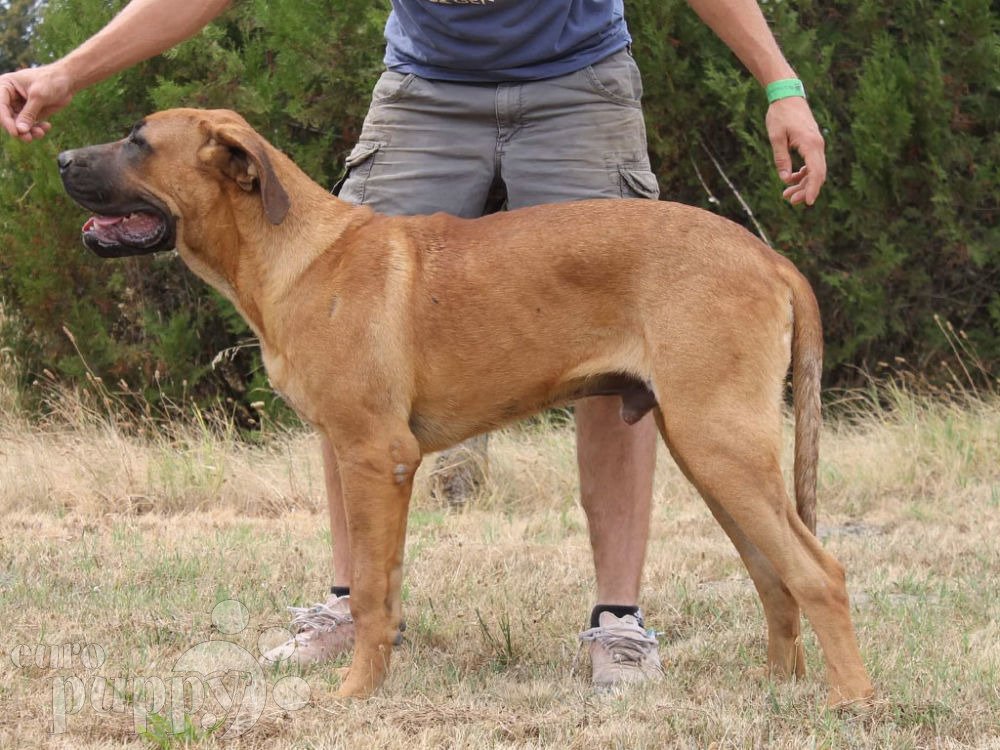
The Tosa Inu is one of the few breeds of dogs that may still be used in a legal dogfight in Japan.
Historically, dog fighting has been prevalent in Japan, as reported by the American Kennel Club. It was probably in the early 14th century that blood sports first started, and it was also about this time that the island of Shikoku gave birth to a dog that would remain unsurpassed for generations. The name “Shikoku Inu” was given to this breed of dog.
In little time at all, outsiders started putting their own spin on this amazing dog, and the breed became known far and wide as a wonder.
Fanciers of dogs and dog fighters alike set out to develop their own variations on this fearsome and unrivaled fighting breed as early as 1854.
For their own purposes, they crossed the Shikoku Inu with various breeds of dogs from other countries.
The Great Dane, the Bulldog, the German Shorthaired Pointer, and maybe even the Bull Terrier and Saint Bernard are only few of the Western dogs that contributed to the eventual creation of the Tosa Inu.
As we indicated up above, Tosa Inu canines are the only breed that may be used for combat in Japan today. Nonetheless, dog owners all across the globe adore their canine friends because of their loyalty and intelligence.
Can You Trust a Tosa Inu? Let’s Discuss Moods and Tempers
A Tosa Inu, when raised properly, may be a very dedicated, friendly, and loyal companion. While generally docile, this dog may become a formidable adversary if handled improperly.
The Tosa Inu, according to some accounts, has a propensity for bad behavior and has earned a reputation as a potentially hazardous breed in certain parts of the United States and beyond.
True, the Tosa Inu, like any dog, needs the right upbringing to guarantee he develops properly and becomes a happy, healthy, well-rounded adult. This is not a dog for everyone; he requires a family who will devote themselves to his care and who will work with him to ensure he receives the early and ongoing training and socialization he needs to thrive.
Although Tosa Inus have been the subject of much debate because to their size and history, well-raised examples of the breed have been characterized as gentle, dedicated, peaceful, and quiet. They show a lot of love to their human family and aren’t the aggressive kind.
On the other hand, they may be hostile and possessive among canines they haven’t been socialized with and wary and suspicious of outsiders they see as a threat to their family or territory.
Dogs of the Tosa Inu breed, when placed with caring owners, may make excellent family pets. They are patient and protective of the young they were reared with. Tosa Inus are enormous and strong dogs, thus it’s never a smart idea to leave kids alone with any dog.
Tosa Inus should not be subjected to rough play by children, and instead, teachers should instruct kids of suitable ages on how to read and respond to canine nonverbal cues.
The likelihood of a dog bite occurring in the house or elsewhere may be reduced if the owner has a better understanding of their pet’s emotional state.
It’s important to note that if a Tosa Inu isn’t nurtured correctly, it may become a very challenging and overpowering dog for its family. They’re huge canines that don’t typically achieve adulthood until they’re at least four years old, a fact confirmed by the American Kennel Club.
Your Tosa Inu may continue to exhibit puppy-like, defiant behavior for a long time; thus, training and socialization should be carried out regularly and with patience.
As a result, the Tosa Inu is not a good choice for first-time dog owners or those who are unable to give the dog the attention it needs.
Advice for Socializing and Training Your Tosa Inu
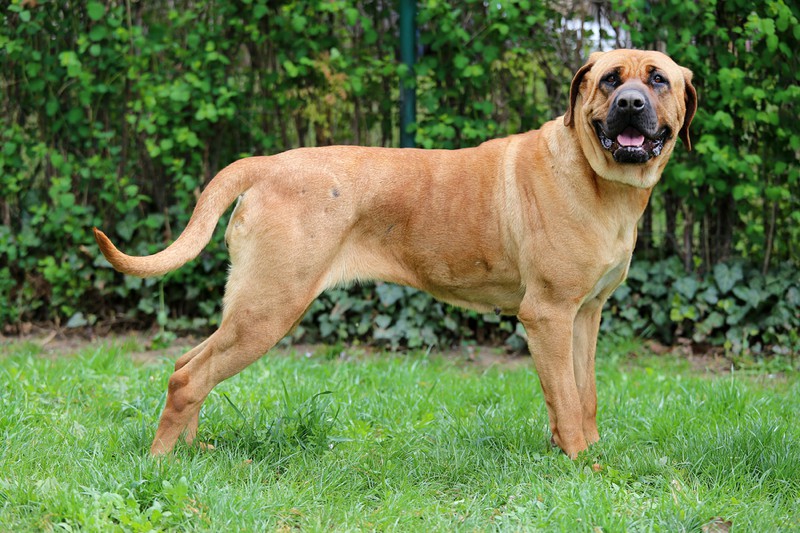
Your dog has to be trained and socialized from a young age and throughout its life.
Training and socialization are essential to the rearing of a Tosa Inu because of the dog’s size and protective nature.
Regular puppy socialization and training is necessary for this kind of dog. If you want a dog that is psychologically healthy and easily trainable as an adult, it’s best to get him from a reliable breeder or another source that has worked with him from birth.
Now, I Want to Discuss Training with You. Tosa Inu
If you get started on the right foot with your Tosa Inu, he will be a pleasure to train. It’s best to start teaching your puppy as soon as possible after you bring him home. Use positive reinforcement training methods, including giving goodies and praise.
When teaching your Tosa Inu, it is important to be tough, but harsh penalties or scolding should be avoided. This might cause your dog to shut down during training, which in turn could lead to fear-based aggression and damage your relationship with him.
Remember that the Tosa Inu is a dog that is both smart and loyal by nature. He will be eager to learn and do what his family asks of him after he has established trust with them. All he cares about is winning your favor, therefore it will make all the difference in the world if you instruct him by demonstrating the desired behavior rather than the undesirable alternative.
When training a Tosa Inu, it is essential to utilize high-quality goodies. The best way to hold your Tosa Inu’s attention during training sessions is to use high-value goodies. Small, chewy, and very fragrant snacks are the norm rather than the exception.
Tosa dogs have a lot of friends
Your Tosa Inu’s early socialization and training are equally crucial. You shouldn’t expose your puppy to a lot of new people and canines until he’s had all of his vaccinations. Nonetheless, you may start preparing your Tosa Inu puppy for the outside world by taking him on vehicle excursions and exposing him to new sights and noises from a distance.
Try to expose your puppy to as many new people, locations, pets, sights, and noises as you can once he has had his vaccinations and protective measures. As your Tosa Inu matures, he or she will be less likely to suffer fear and anxiety if they are exposed to pleasant experiences.
Remember that you can’t always influence your dog’s perspective and that if something seems too scary for your Tosa Inu, you shouldn’t make him face it.
Because of this, your dog may develop fear-based aggressive tendencies later in life, which may exacerbate existing behavioral problems.
Instructions For Ensuring That Your Tosa Inu Gets Sufficient Physical And Emotional Challenge
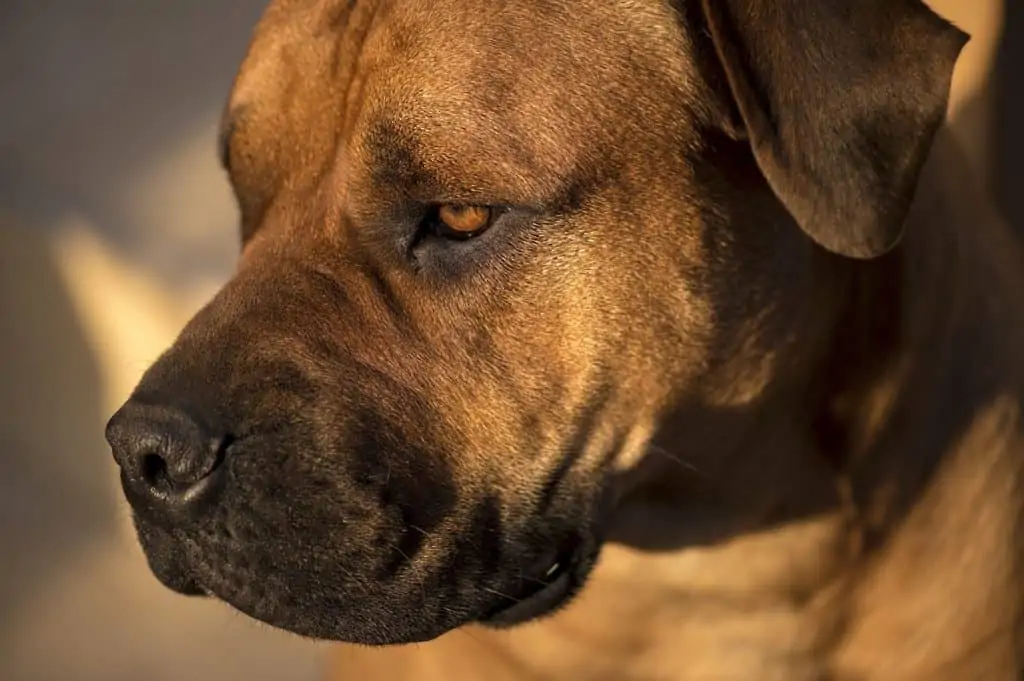
Tosa Inus are very intelligent and active canines. Because of this, he needs a lot of physical activity and mental challenges.
Yes, the Tosa Inu is a really huge dog. His ancestry suggests he is related to Great Danes and Mastiffs, two of the biggest dog breeds in the world. Even though the Tosa Inu is generally a laid-back dog, he still needs daily exercise and mental stimulation to preserve his happiness and health.
Activity With A Tosa Inu
Your Tosa Inu requires at least one to two hours of exercise every day. Two lengthy walks each day, excellent treks, or free-range playtime in a large, enclosed yard are all great options.
We wouldn’t advocate taking a Tosa Inu to a dog park because of the breed’s possible propensity for canine aggression.
We also recommend using a sturdy leash and harness that gives you complete command when walking your dog.
While the Tosa Inu is not often a dog that would pull ahead on walks, he may become aggressive with other dogs on the street if he has not been properly socialized and taught.
However, choke chains and prong collars should be avoided. A front clip dog harness or Halti lead is preferable since it prevents your dog from dragging and gives you complete command over him while keeping him secure and happy.
We propose the tactical dog harness from ICEFANG Store that you can see up above for exceptionally big, strong canines like the Tosa Inu. With its durable military-grade construction and thoughtful design, this dog harness will make walks with your four-legged friend more enjoyable for both of you.
This harness has front and rear clips for maximum adjustability. There’s a carry strap on the rear as well. The harness is modifiable to accommodate a variety of dog sizes. It is offered in three sizes and a rainbow of hues.
Why Your Tosa Inu Needs Mental Exercise
Although the Tosa Inu has worked in his blood, he may be trained to be a fairly quiet companion throughout the day if his activity demands are addressed. The average Tosa Inu spends his days contentedly observing the goings-on of his human family from his comfy bed. However, like other dogs, he needs cerebral stimulation to be healthy and happy.
Training the Tosa Inu may be a lot of fun, especially if you give him some interesting tasks to do. You may do this by teaching him tricks or cues for fun, or by having him complete little obstacle courses in your house or yard in exchange for food and praise.
To prevent destructive chewing, separation anxiety, and excessive barking while you’re gone, leave your big dog with a KONG or a puzzle toy.
Care and Maintenance of a Tosa Inu Dog
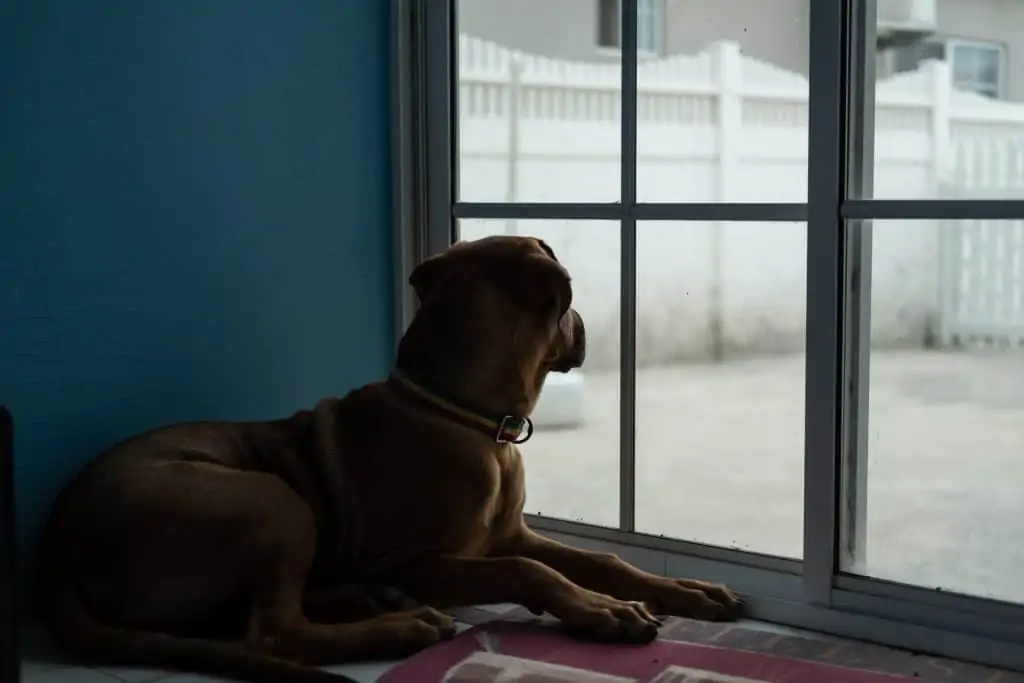
The coats of Tosa Inu dogs are quite short and shed very little. To keep them healthy, they need to be brushed, bathed, and given other basic care on a regular basis.
The Tosa Inu’s short, sleek coat loses very little at any time of the year. It’s possible, however, that he’ll shed more extensively in the spring and autumn when that process is natural. The Tosa Inu, like other dogs with a double coat, can benefit from periodic brushing to remove debris and dead hair.
Otherwise, standard grooming practices should be sufficient for keeping this breed clean and healthy.
Tosa Inus should be bathed every six to eight weeks using a dog-safe shampoo that does not include any colors, alcohols, parabens, or other substances that might dry out his coat.
Your Tosa Inu will require more than just the occasional wash and brushing to prevent ear infections; he will also need his ears examined and cleaned on a regular basis to remove any waxy buildup, dirt, moisture, or wax.
The dog’s teeth should be cleaned at least once daily using a dog-safe toothbrush and toothpaste, and his nails should be clipped once every few weeks using a canine nail trimmer or nail grinder.
The Tosa Inu Dog: Its Physical Condition and Expected Lifespan
The Tosa Inu, like other breeds of dog, is susceptible to a variety of hereditary diseases.
There are some Tosa Inus that live longer than the average of 10 years. However, keep in mind that this is a large dog breed, which means he may have some unusual health problems.
There are a number of factors that might affect a Tosa Inu’s health.
- Deficiency of the Hip Joint, or Hip Dysplasia
- Bloat, or gastric dilatation and volvulus, may cause skin problems.
- Allergies
- Developmental Impairment of the Elbow, or Dysplasia
- Hypothyroidism and Hyperkalemia
Despite the fact that it might be difficult to forecast or avoid health concerns in an aging Tosa Inu, there are things you can do to make sure your dog lives the healthiest life he possibly can.
It’s important to get your dog from a reputable breeder.
Obtaining a Tosa Inu from a reliable breeder is the first and most important step. If you want a dog, adopt one from a shelter that can tell you about the dog’s past or get a puppy from a registered breeder who knows the value of responsible breeding.
Get a checkup for your Tosa Inu
If you go via a reputable breeder, you should get documentation verifying your Tosa Inu’s lineage and evidence that he or she is free of major health problems.
On the other hand, a canine DNA kit may provide you with a more thorough list of possible health concerns and give you a better sense of what to keep a look out for in the future.
Maintain a healthy routine of grooming and exercise.
The best way to keep your Tosa Inu in tip-top shape is to give him a regular routine of exercise and grooming. Maintain a regular routine and invest in high-quality grooming products and supplies made with your dog in mind.
You should feed your Tosa inu high-quality food and maybe even get him a puzzle feeder to keep him mentally stimulated.
The Tosa Inu, like other deep-chested giant dog breeds, is at risk of developing Gastric Dilatation Volvulus, or bloat. The rapid ingestion of food or water, the ingestion of foreign substances, or the ingestion of food or water too soon after exercise are common causes of this potentially fatal disease.
Your dog will go into shock if he experiences bloat, which happens when the stomach becomes distended with air and forces other organs to flip.
The best way to prevent bloat in your dog is to provide him a high-quality diet that takes into account his age, weight, and level of activity, and to divide his daily food allowance into many smaller servings.
If your dog tends to gorge himself at mealtime, try getting him a puzzle feeder, and hold off on giving him anything to eat or drink for a while after vigorous activity.
Keep Up With Regular Vet Checkups
Finally, we stress the need of maintaining regular veterinary checkups and care. The Tosa Inu, like other big dog breeds, should see the veterinarian at least once yearly until they are around seven years old, after which they should visit twice yearly.
If you had to choose one, what would be the best kind of house for a Tosa Inu?
Despite his potential as a loving friend, the Tosa Inu is a demanding pet. Keep in mind that he is a breed that, if not properly cared for, may develop behavioral disorders; he also develops more slowly than the average dog of his size.
This means that the best person to care for a Tosa Inu dog would be someone who recognizes the significance of providing their pet with consistent training, socialization, and exercise. The ideal dog owner will have knowledge of and experience with working dog breeds, as well as a schedule that allows for plenty of time to be spent with their pet.
The Tosa Inu requires not just an experienced and dedicated dog owner, but also a large, open area to run and play in. Due to his massive size, this breed is best suited for households with plenty of open space, including a securely enclosed backyard where he may run and play.
In spite of his low profile, the Tosa Inu is not a suitable apartment pet. He might be an issue in tight quarters with thin walls, particularly if there are a lot of people coming and going all the time and he is wary of strangers and other dogs.
The Tosa Inu, it is worth noting, is a breed of dog that is on several states’ prohibited pets list. Think about the breed regulations and laws in your region before opting to have a Tosa Inu.
Learn Where to Look for a Fit and Healthy Tosa Inu Pup
The chances of stumbling onto a Tosa Inu puppy are low, since the breed is uncommon.
It may be challenging to locate a rescued Tosa Inu puppy. Sadly, this is because Tosa Inu dogs are quite uncommon in the United States. However, trustworthy dog breeders and maybe even rescues or shelters are available for this breed. Generally, you only need to put in some time and effort into researching the topic.
Budget between $1,000 and $3,000 if you plan on purchasing this puppy from a breeder.
It is important to be careful when purchasing a Tosa Inu dog and to only deal with reliable providers due to the high level of care they need.
Avoid buying a Tosa Inu puppy from a backyard breeder, an unlicensed internet vendor, or a breeder that asks much more or less than the going rate for the breed.
You may have to do some digging if you want to seek help via a rescue organization. Large-breed dog shelters like those for Mastiffs and Great Danes take in many of these strays.
It’s important to be as informed as possible during a rescue, so don’t be afraid to ask questions and set up $250-$500.
All too often, this cost doesn’t include the first vet checkup and maybe some rudimentary training that should be included. A dog adopted through a rescue organization may already have been spayed or neutered, and you may even be able to save money by not having to pay to have it done.
Whether you choose to adopt or purchase your Tosa Inu depends on your own circumstances and requirements. Keep in mind that although this dog may make a wonderful companion for individuals with extensive dog-owning experience, he is not the best choice for those who are just starting out.